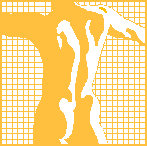|
|
|
Culture "embodied"
Culture extends the capacities of our human bodies
 Another intriguing way of thinking about culture is as all the extensions that humans have created. At the first level, an extension takes a function of the human body and improves or extends it, for instance a telescope extends the vision range of the eye. Another intriguing way of thinking about culture is as all the extensions that humans have created. At the first level, an extension takes a function of the human body and improves or extends it, for instance a telescope extends the vision range of the eye.
Some extend the power of the mind to store information or to do mathematical calculations, such as the computer that brought you this page. Other extensions are conceptual or complex systems --- extensions of extensions of extensions, such as spy satellites, for example, or schools, newpapers, corporate "vision statements", calculus....(See Edward Hall's classic book, Beyond Culture.)
Cultural extensions exercise What extensions have humans created for these various functions of the body?
Purpose: The world can look different for several days after doing this exercise! It is useful in linking our societies' complex systems and technologies and beliefs with the fundamental, central reality of the human body as the core of our experiences and actions.
Materials: Names of different parts of the body, different functions of the mind, each on a separate slip of paper. For younger groups, you might also want to put one or two examples of extensions on each slip.
Instructions: Review the question "What objects or systems have humans developed to extend this particular body/mind function (beyond what is physically possible for a human to do without extra help)?"
Pick one of the slips out of the hat, and have the group generate a list together with the leader's help. Then ask participants to pair off. Each pair chooses a slip out of the hat. Give them about 5 minutes to generate the longest, most imaginative list they can.
Some examples:
- Fingernails: screwdriver, scratchpaper, backscratcher, thimble, shovel, utensils, tweezers.
- Visual memory: camera, books, paintings, movies, post-it notes,
planner, advertising, maps.
- Skin: clothing, buildings, sunscreen, racial classifications, bedding, tatoos, artificial vitamin D.
- Territorial part of the brain: maps, boundaries, armies, signposts, locks, global positioning systems
- Lungs: oxygen tanks for scuba diving, yoga, microphones and speaker systems
- Feet: trampolines, bicycles, escalators, cars, ballet point shoes, airplanes, 12 inch measurement unit, postal and delivery systems, canes.
- Emotion of sadness: mourning rituals, Prozac, poetry, naming of buildings and places.
- Counting on fingers (the original computing method was digital!): arithmetic, calculators, mathematics, computers, outlines, systems for ordering objects, calendars, money.
Discussion: You can either have each group read out the two examples that they think are most interesting, or draw a large silhouette of a human being and have each group write in one or two answers next the the appropriate part of the body. (You may need a separate sketch of a head if you have many pairs.)
|
